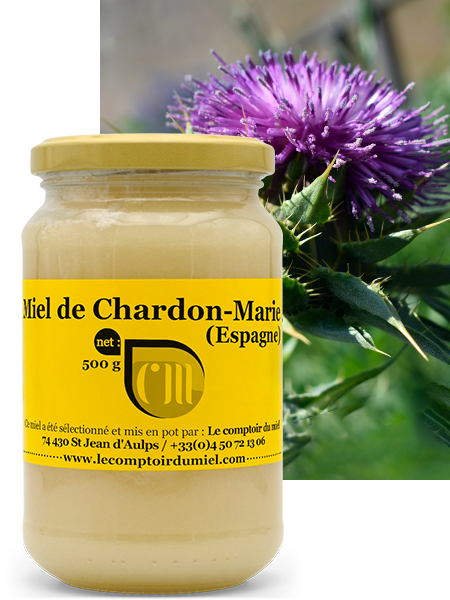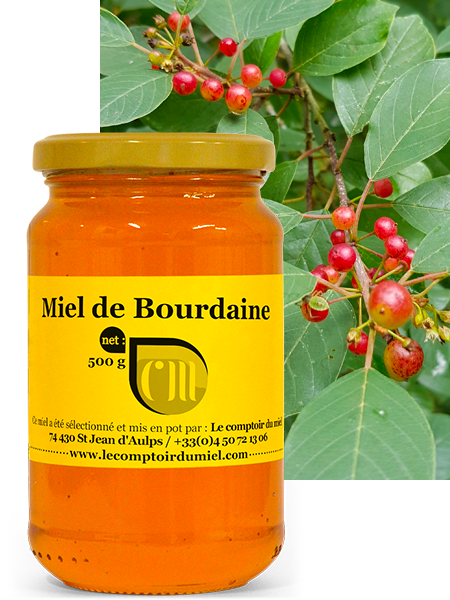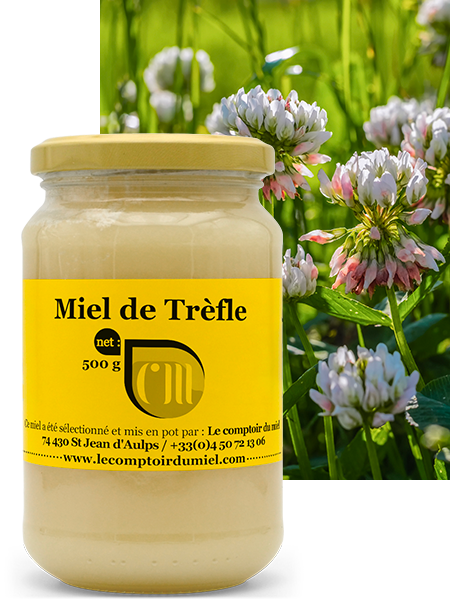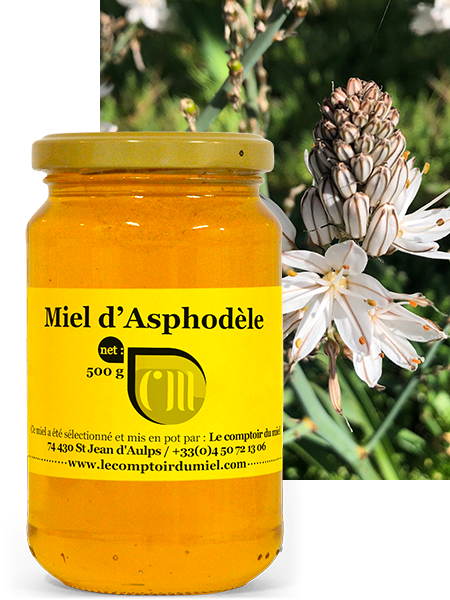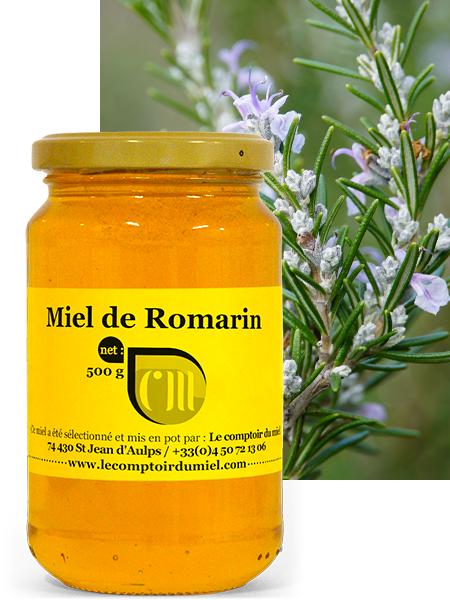Very popular with children, this milk thistle honey is harvested in spring, just as the surrounding countryside is maturing and blossoming under the hours of sunshine prolonged by the lengthening days. Wild milk thistles love this sunshine and the dry soil of the Spanish province of Soria, in Castilla y Leon. Located on the banks of the Douro river, it’s here at an altitude of 1,000 meters that milk thistles grow and bloom. Throughout the flowering period, the thistle is adorned with its beautiful, bushy, vibrant fuchsia flowers, and the bees gather the precious nectar for their honey production.
We offer two harvests of milk thistle honey:
On the one hand, this crop from the Spanish province of Soria in Castilla y Leon produces a sweet honey with a fine, white crystallization.
On the other hand, another Balagne harvest from the spring of 2023 that you will find in the same section. Harvested by our Corsican partner beekeeper, it is more typical and fluid, with a presence of honeydew this year. The two harvests are worth comparing.
The benefits and virtues of milk thistle :
The use of milk thistle for hepatic and biliary health goes back to ancient times. Indeed, the Greek physician Pliny the Elder already recommended combining the plant’s juice with honey. In Europe, however, the plant was long used as a vegetable garden. Every part of the plant was eaten: leaves, young shoots and buds. The seeds were also roasted in the same way as coffee.
Milk thistle has long been used to treat depression and liver disorders! Recent recent research has confirmed the traditional knowledge of herbalists. Indeed, this plant has a remarkable effect on liver intoxication by alcohol and other toxic substances. Today, milk thistle is used in the West to treat a wide range of liver disorders. In the past, the flower heads of milk thistle were consumed. They were boiled like artichokes to tone the body in spring. After winter, fresh vegetables were in short supply! The flowers were also used to stimulate the secretion of breast milk and to combat depression. At the time, depression was attributed to liver disorders. In his 1597 phytotherapy treatise, Gérard Guilbert described milk thistle as “the best medicinal plant for curing all melancholy diseases”!
In addition, scientific studies highlight a class of active ingredients : silymarinresponsible for its health benefits. This is a group of natural molecules specific to Milk Thistle, the main and most bio-active of which is silybin. Silymarin is an antioxidant that protects liver cells.
The discovery of this active ingredient in the 1970s led to several clinical trials confirming the benefits of milk thistle for the liver.
The taste and preservation of milk thistle honey:
Our thistle honey keeps perfectly well wherever it is harvested. The thistle harvested in the province of Soria has already crystallized. It is white and slightly creamy. It has a faint odor and a light, delicate flavor. For lovers of fine, delicate honeys!
Honeydew harvested in the Balagne region will remain liquid longer, mainly due to the presence of honeydew. Its color is darker, and its taste more pronounced.
Did you know?
The name milk thistle derives from a legend dating back to the Middle Ages: during a journey from Egypt to Palestine, the Virgin Mary, wishing to conceal her child Jesus from the troops of Herod the Great, deposited him in the broad leaves of the milk thistle. According to this legend, the white spots on the leaf veins characteristic of the species are “hereditary” traces of the Virgin Mary’s milk drops.
